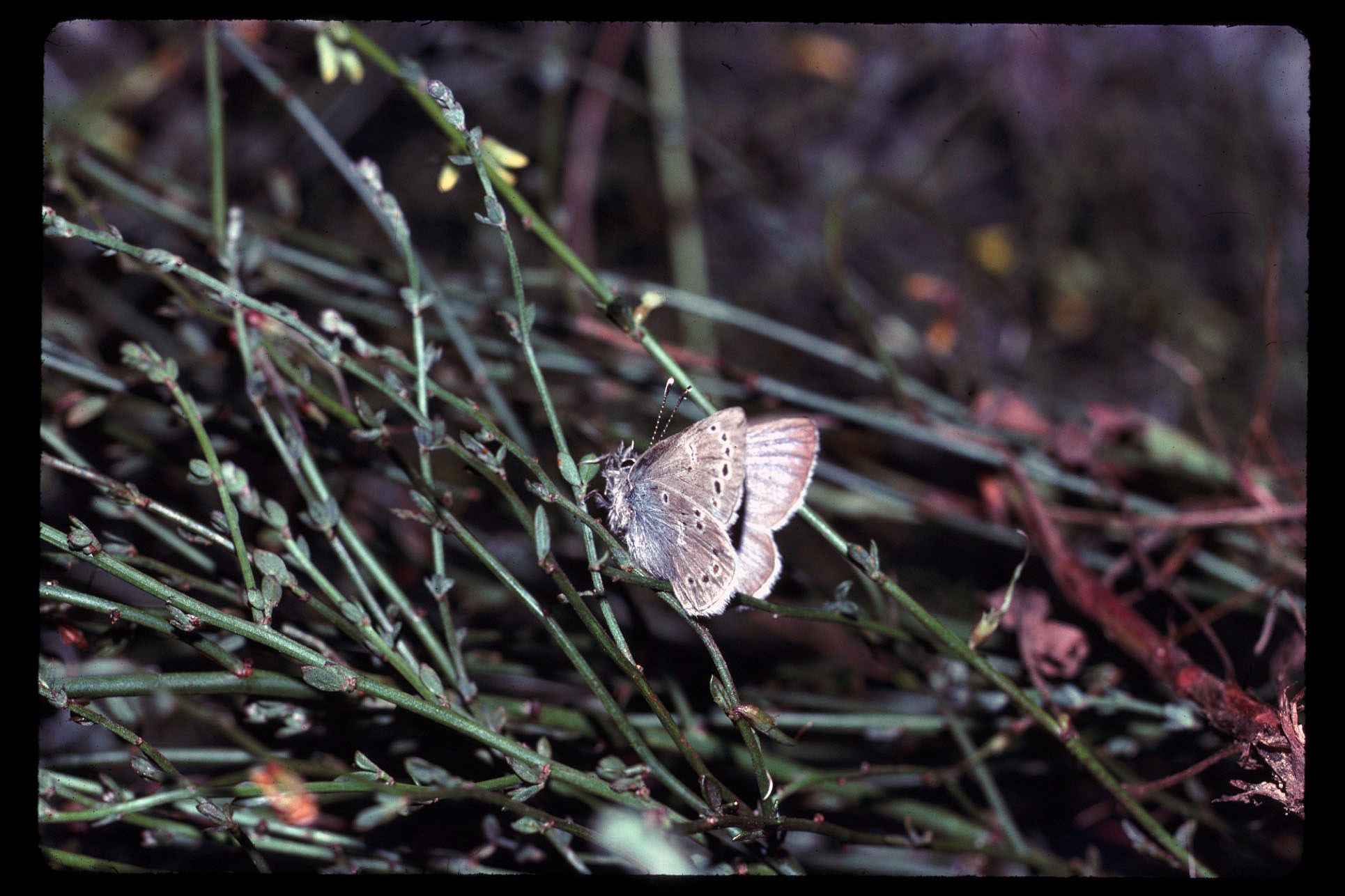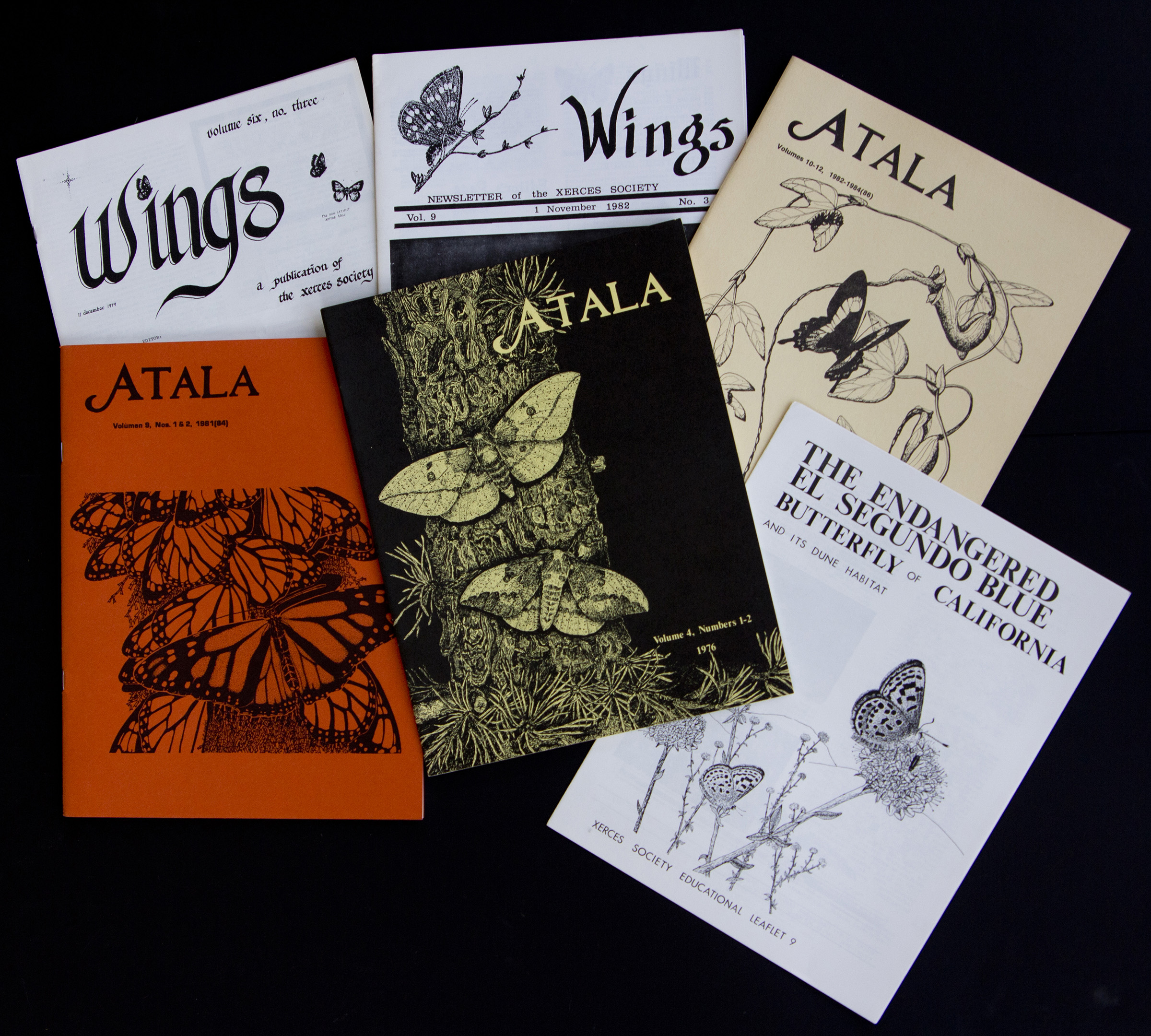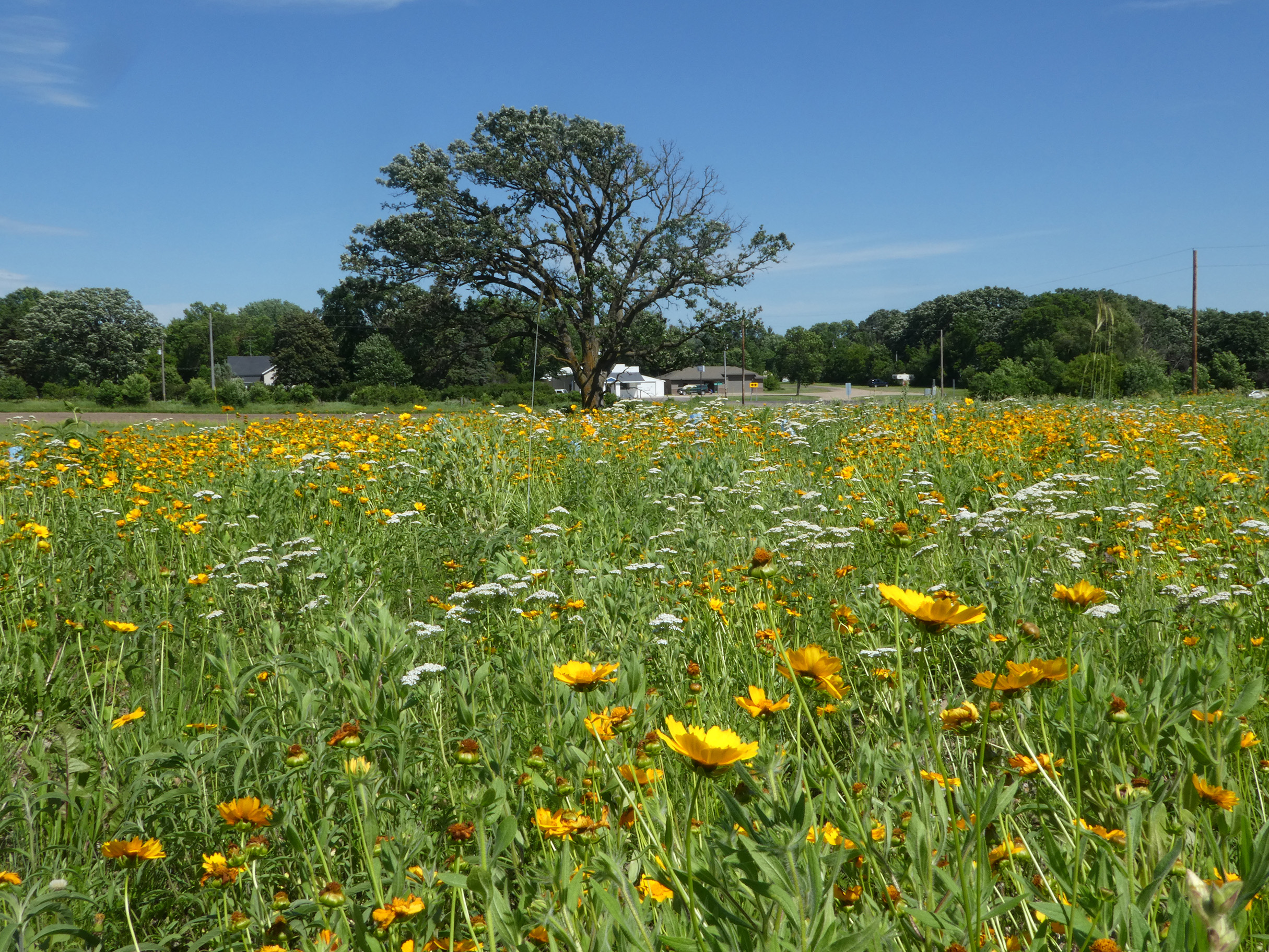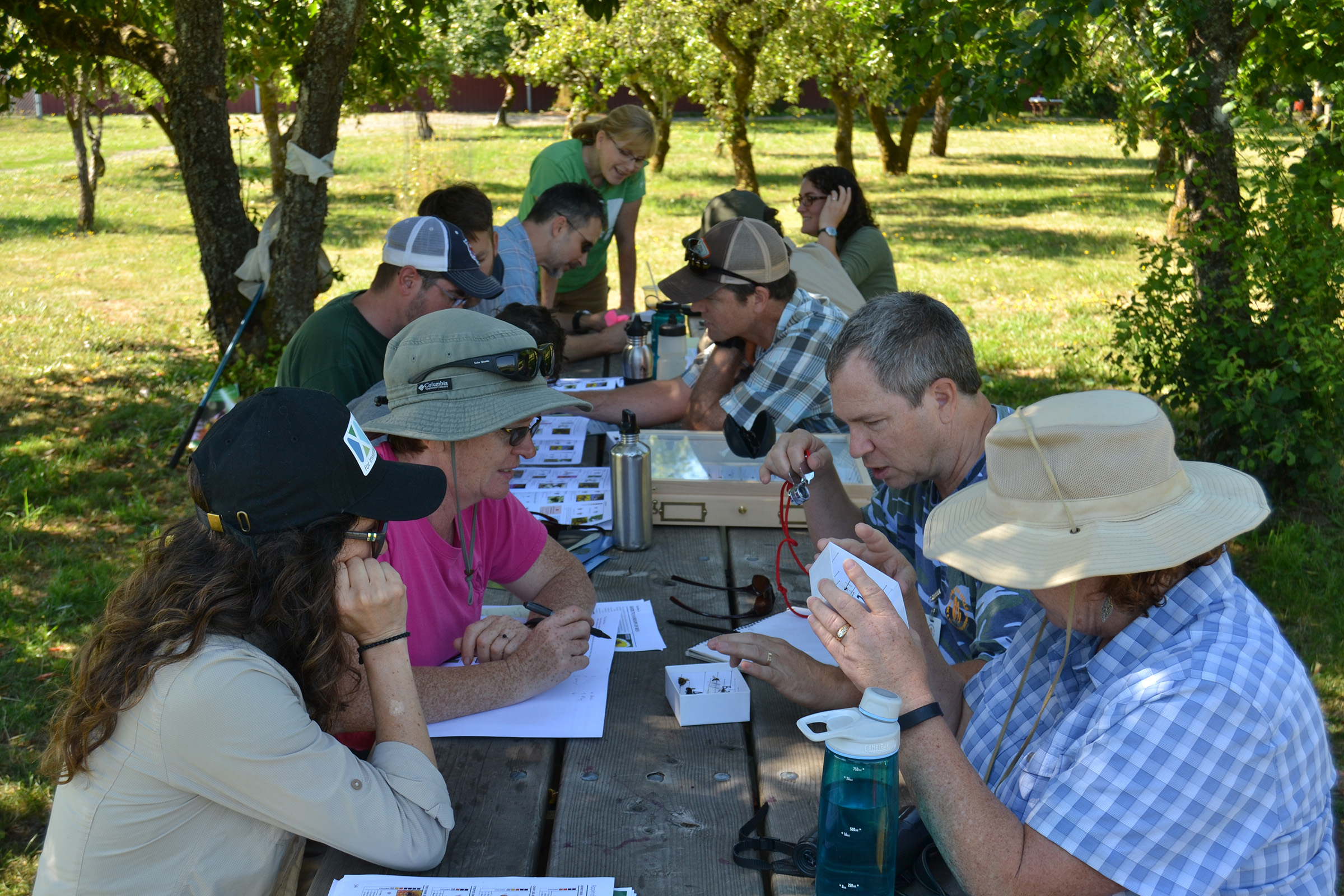This year is notable for various reasons—the United States has a new president, Britain is charting a new course outside of the European Union, and COVID vaccines are rolling out across the world. It is also a landmark year for the Xerces Society: 2021 is our 50th anniversary!
The Xerces Society was founded in 1971 by Robert Michael Pyle, or as friends call him, Bob. At the time, Bob was studying and working in Britain, and in December of that year he attended a lecture in London about the large blue butterfly, which despite decades of conservation effort was on the brink of disappearing from Britain. As Bob noted in his essay on the origins of the Xerces Society:
“It occurred to me that we in America had already lost such a butterfly, the Xerces blue, extirpated on the San Francisco Peninsula in the early ’forties. The “X” of Xerces, I imagined, would make a perfect symbol for extinction, and could be wrought into a butterfly shape. Spontaneously, the concept of the Xerces Society arose.”

Our namesake, the Xerces blue (Glaucopsyche xerces). The butterfly was last seen on the wing in 1943, and is one of the first butterflies known to go extinct in North America because of human activity. This photograph was staged, probably in the late 1970s: the butterfly is a museum specimen placed on stems of deerweed, the caterpillars’ host plant. The 35 mm transparency was scanned about 15 years ago. (Photo: Xerces Society / Larry Orsak.)
Bob immediately went about making his inspiration into reality, which in the pre-internet world meant printing and mailing postcards. He quickly gained support and encouragement, and soon was joined by Jo Brewer, who provided organizing skills and time, and then as additional people signed up the Xerces Society was established.
For the first dozen years, the Society was run by Bob and other volunteers with a focus on butterfly conservation. Members engaged in advocacy for at-risk species as well as promoting butterfly gardening with a series of fact sheets. Wings was born as a black-and-white newsletter, and publication of Xerces’ journal Atala was begun. In 1975, the Fourth of July Butterfly Count was launched.

A selection of early publications from the Xerces Society: Wings in its original form, the journal Atala, and a species fact sheet. In the 1970s, these were ground-breaking resources. (Photo: Xerces Society / Carly Voight.)
In the early 1980s, Bob and the Xerces board of directors realized that butterflies were not the only invertebrates that needed conservation attention. They also realized that the organization needed paid staff. Through the 1980s and ’90s, the staff remained small, no more than a half dozen, but they undertook ground-breaking work and were pioneers in two issues that are now so prominent, monarch butterflies and pollinator conservation. Top-notch fact sheets and publications continued to be produced, Wings transformed into a color magazine, and the first butterfly gardening book was published.
Over the last 20 years the organization has grown considerably. With more than fifty staff, the Xerces Society is now the largest invertebrate conservation organization in the world, and has the largest pollinator conservation effort of any nonprofit. Our conservation reach extends across North America, and with the help of partners we now have a global presence. Xerces has become internationally respected for its work and is a trusted source for science-based information and advice. Our team draws together experts from the fields of conservation biology, entomology, habitat restoration, plant ecology, pesticides, farming, education, and community engagement with a single passion: Protecting the life that sustains us.

Transforming landscapes and ensuring high-quality, pesticide-free habitat has become a hallmark of Xerces work. Xerces conservationists work with farmers, park managers, public land managers, and many others to create wildflower-rich habitat in both rural and urban places. (Photo: Xerces Society / Sarah Foltz Jordan.)
One reason for our success is that our work has always been grounded in science. The involvement of eminent scientists—John Heath, Charles Remington, E.O. Wilson, Miriam Rothschild, Tom Eisner, Paul Opler, May Berenbaum, and many others—helped set us apart from many other conservation organizations. We now collaborate with science colleagues around the world, and science still underpins everything we do.
Xerces’ science-based approach, coupled with focused education and community outreach, information resources that allow people to take action, community science projects that harness the enthusiasm of volunteers, and policy development and advocacy at all levels of society, has led to protection of dozens of invertebrates and restoration and protection of more than 2.5 million acres of habitat for these vital animals. Read our most recent annual report to see how far we have come.
For many people, this half-century landmark might seem surprising—improbable, even—for an organization that is focused on protecting and promoting animals that are frequently seen as an irritation or pests. But over the decades, with Xerces’ help they have increasingly become recognized for what they truly are, what long-time science advisor E.O. Wilson so memorably described as “the little things that run the world.”

Creating a community of informed and knowledgeable people, and giving them the skills and confidence to take action, has been a constant thread weaving through Xerces’ work. We engage tens of thousands of people each year. (Photo: Xerces Society / Matthew Shepherd.)
During our anniversary year, we will look back to acknowledge and celebrate our achievements and look forward to the challenges that face us in the next five decades. We will also provide ways for all of you—our supporters, partners, and donors—to participate in this celebration. Watch out for more information in the coming months.
Xerces’ fifty years of achievement was possible due to many people who gave time, knowledge, and funding, and who helped establish, build, and sustain the Xerces Society. Their dedication created an enduring legacy that we maintain and grow. It is on their shoulders that we stand today, and thanks to them that Xerces can continue its work to conserve invertebrate diversity, what our founder Bob Pyle described as “the biggest job in the world.”
Further Reading
Robert Michael Pyle’s full story of the origins of the Xerces Society: The Xerces Story.
Wings from fall 2011 described our first 40 years.
Xerces’ most recent annual report summarizes our recent achievements.



